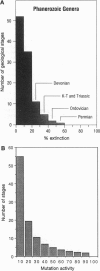Abstract
We present a simple mathematical model of biological macroevolution. The model describes an ecology of adapting, interacting species. The environment of any given species is affected by other evolving species; hence, it is not constant in time. The ecology as a whole evolves to a "self-organized critical" state where periods of stasis alternate with avalanches of causally connected evolutionary changes. This characteristic behavior of natural history, known as "punctuated equilibrium," thus finds a theoretical explanation as a self-organized critical phenomenon. The evolutionary behavior of single species is intermittent. Also, large bursts of apparently simultaneous evolutionary activity require no external cause. Extinctions of all sizes, including mass extinctions, may be a simple consequence of ecosystem dynamics. Our results are compared with data from the fossil record.
Full text
PDF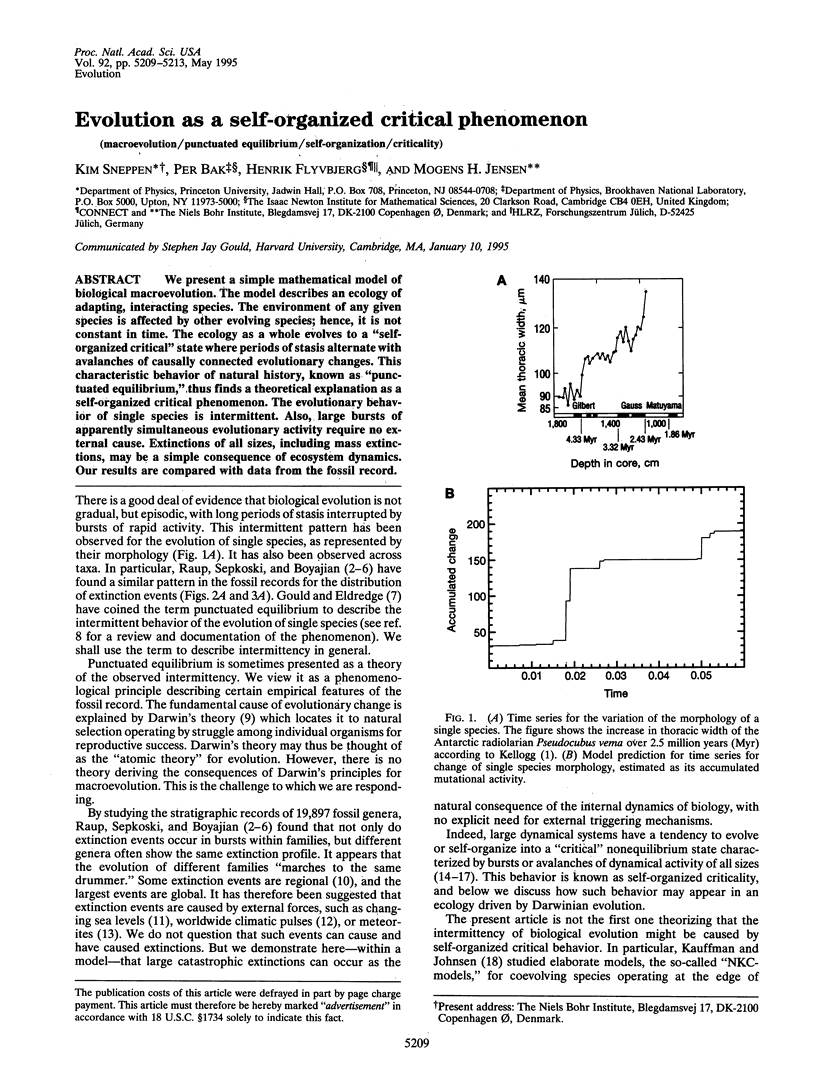
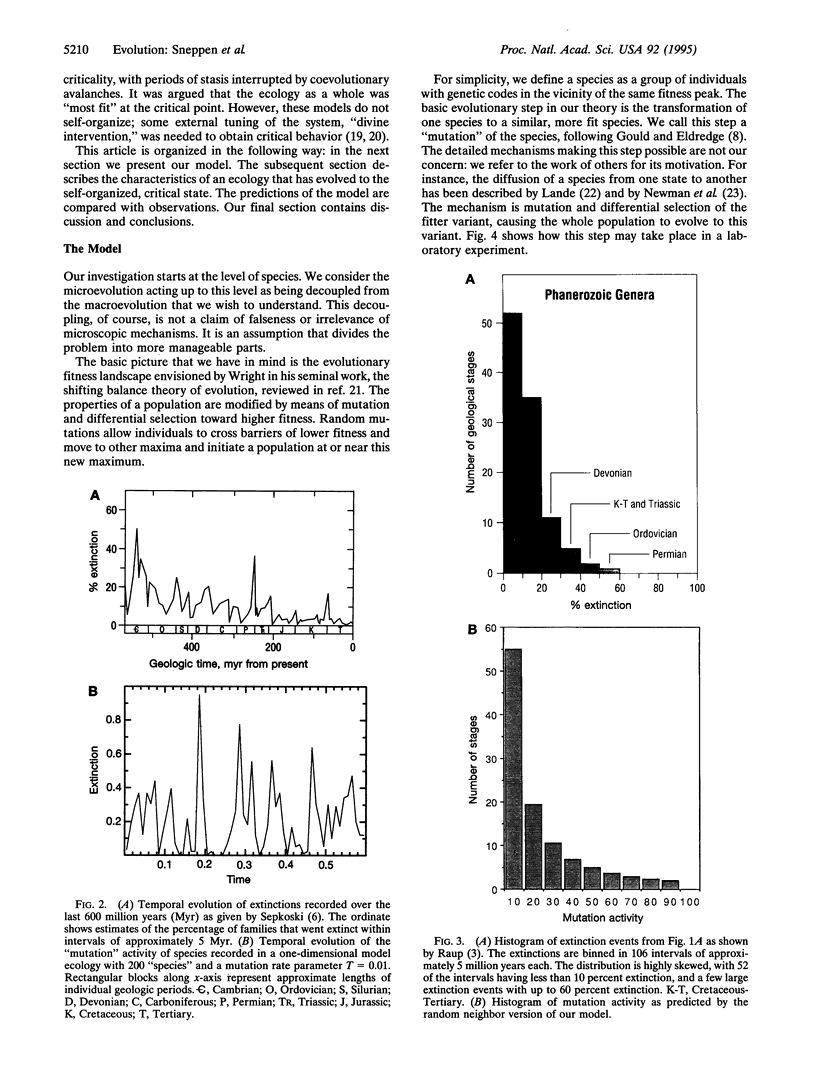
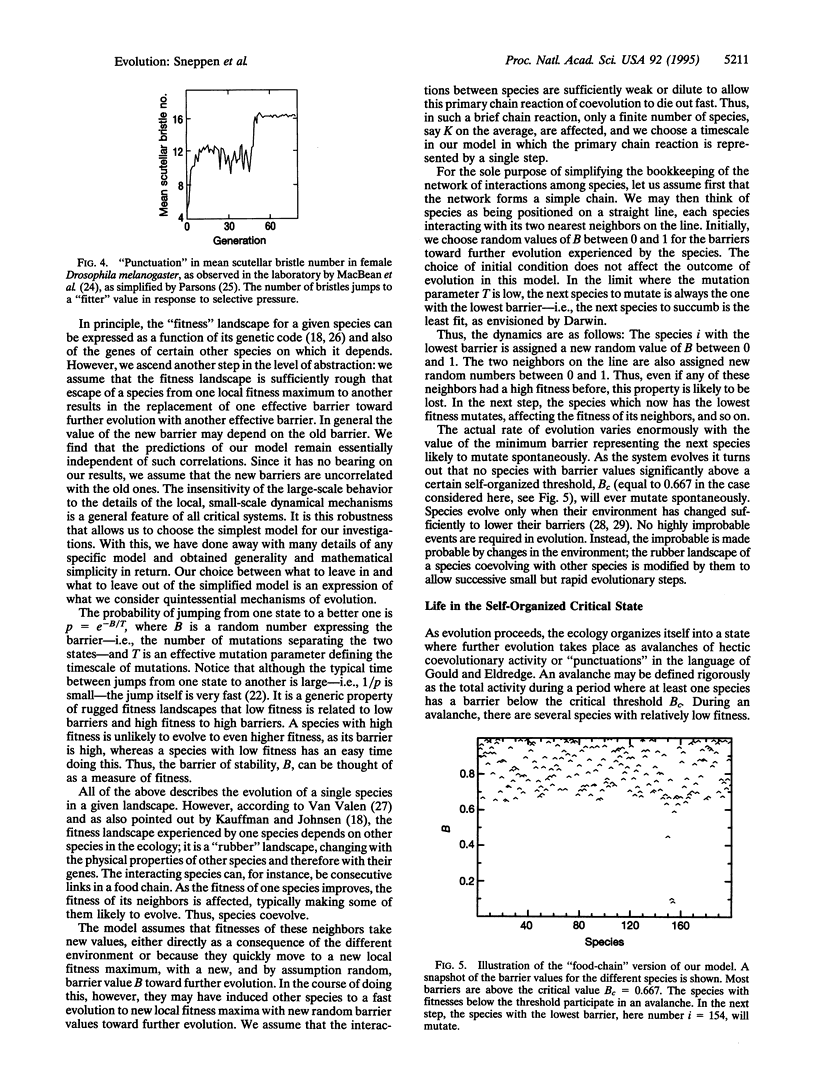
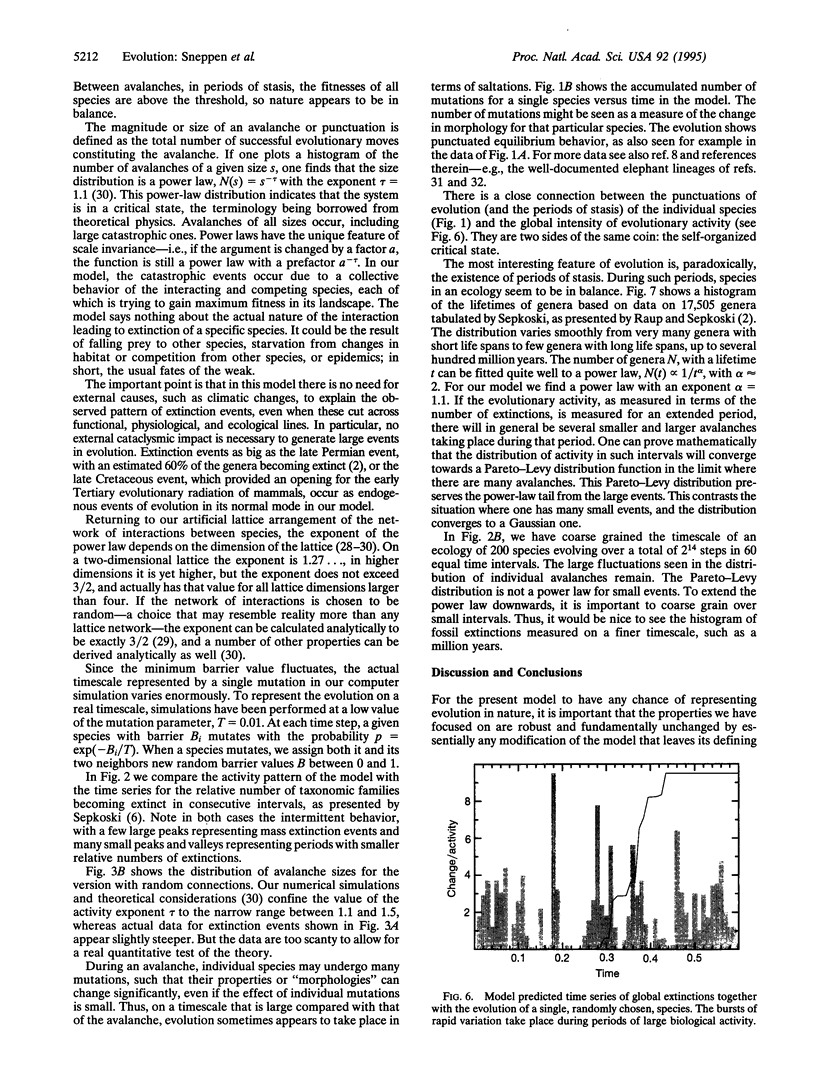
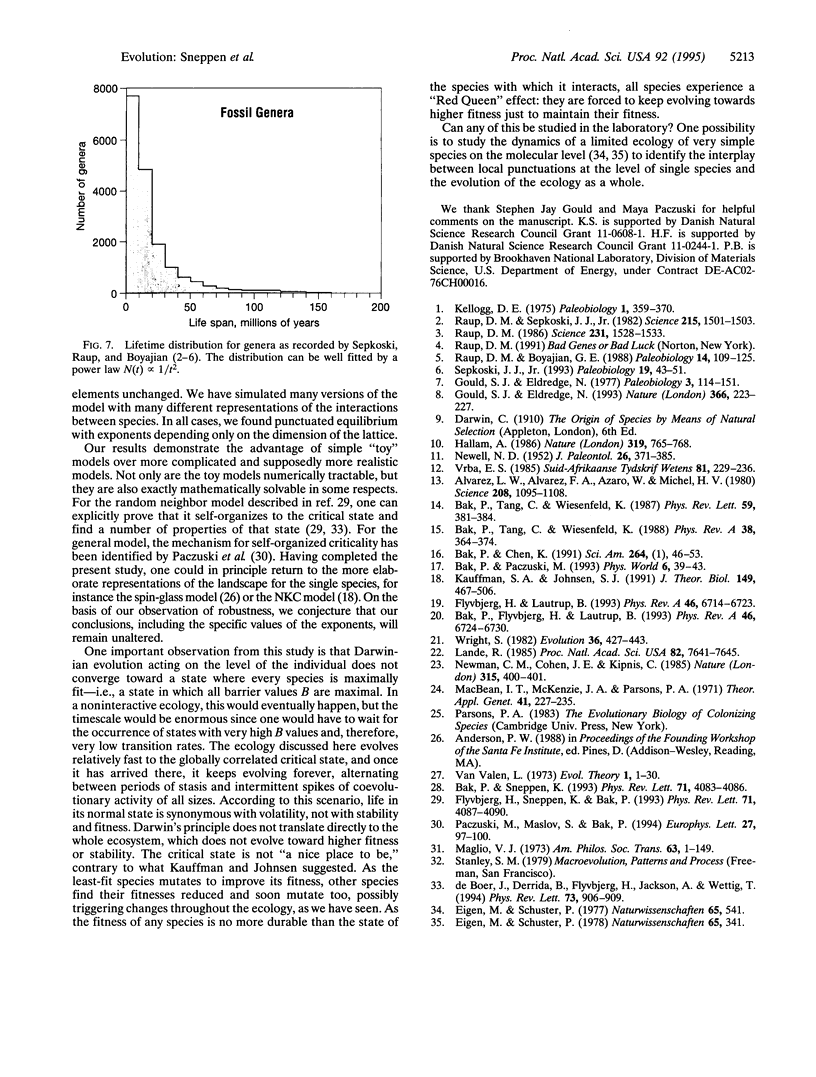
Images in this article
Selected References
These references are in PubMed. This may not be the complete list of references from this article.
- Alvarez L. W., Alvarez W., Asaro F., Michel H. V. Extraterrestrial cause for the cretaceous-tertiary extinction. Science. 1980 Jun 6;208(4448):1095–1108. doi: 10.1126/science.208.4448.1095. [DOI] [PubMed] [Google Scholar]
- Bak P, Flyvbjerg H, Lautrup B. Coevolution in a rugged fitness landscape. Phys Rev A. 1992 Nov 15;46(10):6724–6730. doi: 10.1103/physreva.46.6724. [DOI] [PubMed] [Google Scholar]
- Bak P, Sneppen K. Punctuated equilibrium and criticality in a simple model of evolution. Phys Rev Lett. 1993 Dec 13;71(24):4083–4086. doi: 10.1103/PhysRevLett.71.4083. [DOI] [PubMed] [Google Scholar]
- Bak P, Tang C, Wiesenfeld K. Self-organized criticality. Phys Rev A Gen Phys. 1988 Jul 1;38(1):364–374. doi: 10.1103/physreva.38.364. [DOI] [PubMed] [Google Scholar]
- Bak P, Tang C, Wiesenfeld K. Self-organized criticality: An explanation of the 1/f noise. Phys Rev Lett. 1987 Jul 27;59(4):381–384. doi: 10.1103/PhysRevLett.59.381. [DOI] [PubMed] [Google Scholar]
- Eigen M., Schuster P. The hypercycle. A principle of natural self-organization. Part A: Emergence of the hypercycle. Naturwissenschaften. 1977 Nov;64(11):541–565. doi: 10.1007/BF00450633. [DOI] [PubMed] [Google Scholar]
- Flyvbjerg H, Lautrup B. Evolution in a rugged fitness landscape. Phys Rev A. 1992 Nov 15;46(10):6714–6723. doi: 10.1103/physreva.46.6714. [DOI] [PubMed] [Google Scholar]
- Flyvbjerg H, Sneppen K, Bak P. Mean field theory for a simple model of evolution. Phys Rev Lett. 1993 Dec 13;71(24):4087–4090. doi: 10.1103/PhysRevLett.71.4087. [DOI] [PubMed] [Google Scholar]
- Gould S. J., Eldredge N. Punctuated equilibrium comes of age. Nature. 1993 Nov 18;366(6452):223–227. doi: 10.1038/366223a0. [DOI] [PubMed] [Google Scholar]
- Kauffman S. A., Johnsen S. Coevolution to the edge of chaos: coupled fitness landscapes, poised states, and coevolutionary avalanches. J Theor Biol. 1991 Apr 21;149(4):467–505. doi: 10.1016/s0022-5193(05)80094-3. [DOI] [PubMed] [Google Scholar]
- Lande R. Expected time for random genetic drift of a population between stable phenotypic states. Proc Natl Acad Sci U S A. 1985 Nov;82(22):7641–7645. doi: 10.1073/pnas.82.22.7641. [DOI] [PMC free article] [PubMed] [Google Scholar]
- Raup D. M. Biological extinction in earth history. Science. 1986 Mar 28;231:1528–1533. doi: 10.1126/science.11542058. [DOI] [PubMed] [Google Scholar]
- Raup D. M., Boyajian G. E. Patterns of generic extinction in the fossil record. Paleobiology. 1988;14(2):109–125. doi: 10.1017/s0094837300011866. [DOI] [PubMed] [Google Scholar]
- Raup D. M., Sepkoski J. J., Jr Mass extinctions in the marine fossil record. Science. 1982 Mar 19;215(4539):1501–1503. doi: 10.1126/science.215.4539.1501. [DOI] [PubMed] [Google Scholar]
- Sepkoski J. J., Jr Ten years in the library: new data confirm paleontological patterns. Paleobiology. 1993 Winter;19(1):43–51. doi: 10.1017/s0094837300012306. [DOI] [PubMed] [Google Scholar]
- de Boer J, Derrida B, Flyvbjerg H, Jackson AD, Wettig T. Simple model of self-organized biological evolution. Phys Rev Lett. 1994 Aug 8;73(6):906–909. doi: 10.1103/PhysRevLett.73.906. [DOI] [PubMed] [Google Scholar]



